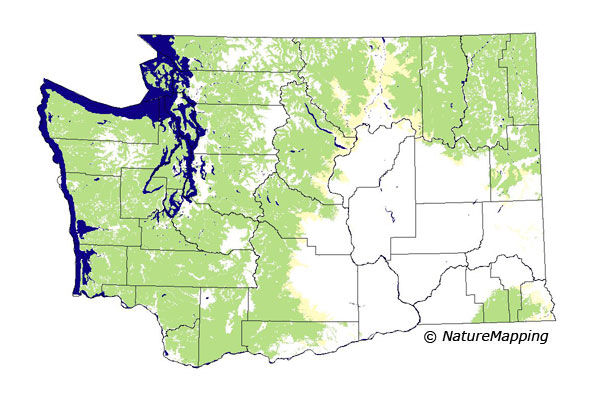

|
Pileated Woodpecker (Dryocopus pileatus) 
What they look like: The crest of the Pileated woodpecker's head is bright red. The throat is black with a white stripe on the side. The body is dark gray to black. In flight the under wing is mostly white. You can tell an adult male from an adult female by looking at their foreheads. Males have a red forehead, while females have a black forehead.
How big are they? Pileated woodpecker is the largest woodpecker found in North America. This woodpecker is about 15-19 inches in length and looks as big as a crow. Their bill acts like a chisel to chip wood away to make their homes in trunks of trees. The bill is just as long as its head. This woodpecker is very unique and is rarely confused with any other woodpecker. Where they live: The Pileated woodpecker can be found in open pine forests with large widely spaced older trees. They claim their territory by drumming on trees with its bill. They can be found in Canada and in western Washington all the way down to northern parts of California and most areas of the eastern United States. What they eat: A large part of its diets is made up of carpenter ants and beetles. It also eats fruits and nuts. It uses its shark like bill to pull bark off trees to find ant colonies. It then uses its long tongue to poke into holes and drag out ants. Nesting: Their nests are large holes in trees trunks. The female lays 2-4 eggs. Both parents incubate the eggs during the day, but the male keeps the eggs warm at night. It takes a little more than two weeks for the eggs to hatch and the baby woodpeckers stay with their parents for about a month. Woodpeckers sometimes use the poles of telephone and power lines for nesting. Due to the size of the nesting hole, eight inches wide by two feet deep, they often make the poles snap. One Pileated woodpecker knocked out electricity for 170,000 people in Florida.
Animal silhouettes available to purchase » Photo courtesy of Natures Pic's Home | About Us | How to Participate | Biodiversity Modules | Projects | Maps | News | Resources |